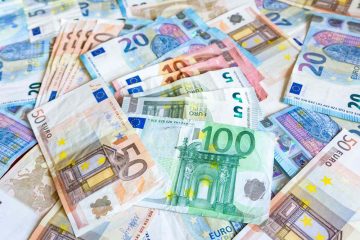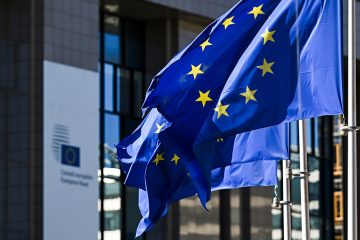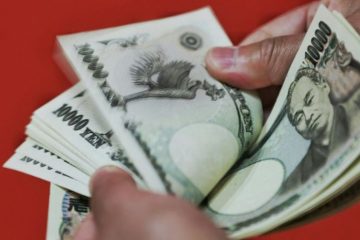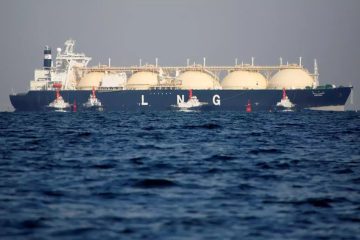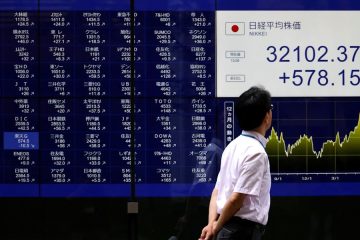| Symbol | Last | Change | % | High | Low |
|---|---|---|---|---|---|
| EUR / SAR | 4.4053 | +0.0003 | +0.01% | 4.4053 | 4.4063 |
| Close | GMT Time : Sat Dec 13 2025 04:03 | ||||
EUR/SAR : Intraday Live Chart
EUR/SAR : Technical Signal Buy & Sell
| 5 Min Signal | 1 Hour Signal | 1 Day Signal |
|---|---|---|
| Sell | Buy | Buy |
EUR/SAR : Moving Averages
| Period | MA 20 | MA 50 | MA 100 |
|---|---|---|---|
| 5 Minutes | 4.41 | 4.41 | 4.40 |
| 1 Hour | 4.40 | 4.40 | 4.38 |
| 1 Day | 4.36 | 4.35 | 4.37 |
| 1 Week | 4.37 | 4.22 | 4.15 |
EUR/SAR : Technical Resistance Level
| Resistance 1 - R1 | Resistance 2 - R2 | Resistance 3 - r3 |
|---|---|---|
| 4.4050 | 4.4043 | 4.4040 |
EUR/SAR : Technical Support Level
| Support 1 - S1 | Support 2 - S2 | Support 3 - S3 |
|---|---|---|
| 4.4060 | 4.4063 | 4.4070 |
EUR/SAR : Periodical High, Low & Average
| Period | High Change from Last | Low Change from Last | Average Change from Last |
|---|---|---|---|
| 1 Week | 4.4056 -0.0003 | 0.0000 +4.4053 | 4.3816 +0.0237 |
| 1 Month | 4.4056 -0.0003 | 0.0000 +4.4053 | 4.3546 +0.0507 |
| 3 Month | 4.4528 -0.0475 | 0.0000 +4.4053 | 4.3653 +0.0400 |
| 6 Month | 4.4528 -0.0475 | 0.0000 +4.4053 | 4.3461 +0.0592 |
| 1 Year | 4.4528 -0.0475 | 0.0000 +4.4053 | 4.2039 +0.2014 |
EUR/SAR : Historical Chart
EUR to SAR Exchange Rate History: Tracing the Euro vs. Saudi Riyal in a Pegged World
The EUR to SAR exchange rate reflects the interaction between a floating European currency and a pegged Middle Eastern one. The Saudi riyal (SAR) has been officially pegged to the U.S. dollar since 1986 at approximately 3.75 SAR per USD, making its exchange rate against the euro largely dependent on EUR/USD fluctuations. While Saudi Arabia retains fiscal and monetary stability via this peg, the EUR/SAR rate is highly sensitive to eurozone monetary policy, global oil dynamics, and U.S. dollar movements.
1999–2004: Euro’s Early Volatility, Riyal Stability
When the euro was introduced in 1999, it initially struggled against global majors, including the dollar. As a result, EUR/SAR weakened, moving from around 4.40 in 1999 to a low of 3.25 by 2000, due to euro depreciation.
However, by 2002–2004, the euro regained strength as confidence in the new currency rose. Consequently, EUR/SAR rebounded to above 4.70 by 2004, marking a phase of appreciation driven almost entirely by EUR/USD recovery rather than any change in SAR fundamentals.
2005–2008: Euro Strength and Oil Boom
This period marked a major surge in the euro, as the ECB raised interest rates while oil prices soared. Given Saudi Arabia’s dollar peg, EUR/SAR rose in tandem with EUR/USD, peaking around 5.70 in 2008.
Despite rising oil revenues in Saudi Arabia, the riyal remained firmly pegged, so euro strength dominated. Investors sought diversification into euros during dollar weakness, and EUR/SAR became a proxy for EUR/USD sentiment.
2009–2012: Eurozone Crisis and Volatility
Following the 2008 financial crash, the euro came under pressure, especially during the sovereign debt crisis in Greece, Ireland, and Portugal. The EUR/SAR rate dropped sharply from 5.70 to 4.75 by 2010 and remained volatile.
Despite Saudi Arabia’s stable macro environment, EUR/SAR reflected euro weakness. By 2012, the rate fluctuated between 4.60 and 5.00, tracking concerns around ECB policy divergence and bailout politics.
2013–2019: Range-Bound Movement Amid Global Stability
The euro stabilized in the mid-2010s as ECB stimulus supported eurozone recovery. EUR/SAR traded between 4.00 and 4.50 during this period.
With Saudi Arabia undergoing Vision 2030 economic reforms, fiscal policy played a bigger domestic role, but had minimal effect on the EUR/SAR rate due to the unchanged dollar peg. The range-bound nature of the euro-dollar exchange defined this calm period.
2020–2024: Pandemic, Inflation, and Policy Divergence
During the COVID-19 crisis, global rate cuts and safe-haven flows initially favored the U.S. dollar, leading to EUR/SAR weakening to around 4.00 in early 2020.
In 2021–2022, however, euro inflation surged, and the ECB began tightening rates more aggressively. The euro staged a recovery, pushing EUR/SAR back to 4.30 by early 2022. Yet, as the U.S. Federal Reserve hiked rates faster, the dollar strengthened, and EUR/SAR fell again to around 3.85 by late 2022.
As of April 2025, EUR/SAR trades near 4.00, reflecting a balanced interplay between euro recovery and a strong dollar, while the SAR peg remains firmly intact.
✅ Key:
🟢 = SAR appreciated vs euro
❌ = SAR depreciated vs euro
⚠️ = Minimal or range-bound change
📊 EUR to SAR Exchange Rate by Decade
| Decade | Avg. EUR/SAR Rate (Approx) | Change vs. Previous Decade | Key Events |
|---|---|---|---|
| 1999–2004 | 4.40 → 4.70 | ⚠️ Slight depreciation | Euro debut, initial weakness then rebound |
| 2005–2008 | 4.70 → 5.70 | ❌ +21% SAR depreciation | Oil boom, euro strength, dollar weakness |
| 2009–2012 | 5.70 → 4.75 | 🟢 -17% SAR appreciation | Eurozone crisis, ECB rate cuts |
| 2013–2019 | 4.75 → 4.30 | 🟢 -9% SAR appreciation | Euro stabilization, global low volatility |
| 2020–2024 | 4.30 → 4.00 | 🟢 -7% SAR appreciation | Pandemic volatility, dollar strength, ECB-Fed policy divergence |
Because of the dollar peg, EUR to SAR is primarily a reflection of EUR/USD movements, and not Saudi Arabia’s domestic economic conditions. However, Saudi Arabia’s fiscal reforms, oil-driven surpluses, and global policy shifts can influence market sentiment and capital flows, making the EUR/SAR a quiet but important indicator of broader macro trends.
EUR/SAR - Euro / Saudi Riyal Currency Rate
Live Price of EUR/SAR. EUR/SAR Live Chart, Intraday & Historical Live Chart, Buy Sell Signal, EUR/SAR News, EUR/SAR Averages, Returns & Historical Data
» EUR/SAR
» EUR/SAR Real Time Quotes
» EUR/SAR Live Chart
» EUR/SAR Intraday Chart
» EUR/SAR Historical Chart
» EUR/SAR Buy Sell Signal
» EUR/SAR News
» EUR/SAR Videos
» EUR/SAR Averages
» EUR/SAR Currency Pair
» EUR/SAR Historical Data

